
На сайте используются cookie файлы
The site uses cookie files
Данный сайт имеет возрастное ограничение!
This site has age restrictions!
Я подтверждаю, что мне, увы, уже давно исполнилось 18 лет
On the eve of the Beaujolais Nouveaux arrival, Drinks+ publishes an interview of its columnist with the head of Inter Beaujolais.
Drinks+ Files
Before Inter Beaujolais, Cécile Bossan-Redon’s career was not connected with the institutional side of the wine industry, she was engaged in export and sales and honestly admitted to Drinks+ that she would not change direction if it were not for Beaujolais, so dear to her heart. But the experience with international markets gave her the opportunity to see Beaujolais wines in perspective on the world stage, therefore the aim appeared to show them to the world, to tell that Beaujolais is not only a celebration of young wine, but 2000 producers, each of which has its own method of wine production. Meet Cécile Bossan-Redon – Managing Director of Inter Beaujolais.
Thank you, Mrs. Cécile, for having devoted your time to us. It is an honour for our Drinks+ Media Group which owns both a print magazine and online resources. We hope that the interview with you will attract a significant audience of our readers, including professionals from Ukraine, Russia, the USA, Germany, Kazakhstan, China, and many other countries.
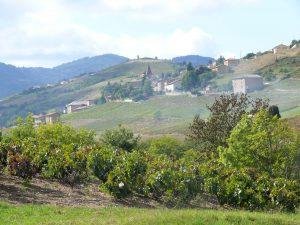
Is your present position a consistent pattern (taking into consideration that your parents were winemakers, and you were born and grew up in Beaujolais)? Or was this career turn unexpected even for you?
It’s true that I did not expect to join the institutional side of the wine industry because my career was more export and sales oriented until I joined Inter Beaujolais. But I wouldn’t have done it for any other region, having grown up here makes it certainly special. I’m passionate about the wines and with interesting challenges to face, it’s an exciting mission.
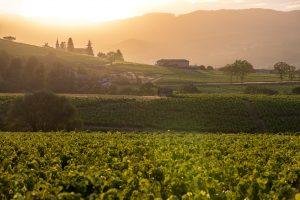
“Working with emerging markets was very informative for me to adopt an educational approach to promote wines to countries where consumption is not historical.”
You worked for Picard Vins & Spiritueux and Boisset for many years. Could you tell us about this experience? How can your past professional knowledge be applied to your current job?
I have an international background: I worked for 2 years in Belgium for Picard Vins et Spiritueux before joining Boisset as an export manager for Latin America, Caribes, China, Spain, Portugal and the Netherlands. And of course, I got the OIV MSc, which is a very international programme as well. This has given me a great knowledge of the global wine market and helps me put in perspective Beaujolais on the world stage since we have the will to reinforce our presence on export markets. Working with emerging markets was very informative for me to adopt an educational approach to promote wines to countries where consumption is not historical. This educational aspect is very important for us to communicate about the diversity of Beaujolais wines when people are often only aware of Beaujolais Nouveaux.
Mrs. Cécile, your parents are winemakers. Could you tell us about them? What wines do they make? How do they feel about their daughter taking such a high position? Was it easy to let you out of the family business (parents usually insist that their children stay in their business)?
My parents are now retired but they did use to exploit 11 hectars of AOC Beaujolais and AOC Beaujolais Villages along with a camping ground and a guest house! There were always European tourists staying around. My parents are happy that I thrive, but they would be in any job. They also have never put pressure on my siblings or me to take over their business and none of us did. It doesn’t seem to bother them.
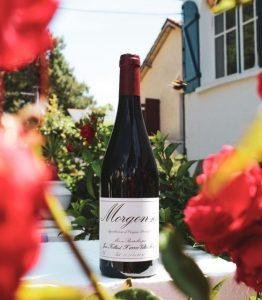
Being the manager of not just one chateau, but of the entire regional association of all Beaujolais producers, is incredibly responsible. How does your working day begin and how does it end? What are the daily responsibilities?
It is a lot of responsibilities but we’re a team: at Inter Beaujolais, we’re a small, very polyvalent team of 14 persons and our main missions are the collective promotion of wines, technical research and experimentation, gathering and transmission of economic data, organizing and streamlining the practices and relationships in use. We have to take care of 2000 producers, so it does require a lot of energy! I don’t really have a typical day of work, I can participate to institutional meetings, receive journalists or influencers, take part in a masterclass, help or advise my team members on operational matters etc. It’s never boring!

“We are lucky that Beaujolais wines are in the spirit of the times we live in: they tend to be fruity, refreshing wines without too much alcohol content, which is what consumers are more and more looking for.”
Tell us, please, about your association – how many winemakers and winegrowers are included, what is the main task today? What are the three main problems / difficulties for winemakers in the region?
Inter Beaujolais is the trade association representing all estates and houses producing or selling wines from the 12 Beaujolais AOPs, that is to say 2000 estates, 9 wine cooperatives and 200 “négociants”. Since our creation in 1959, our role has been to promote the wines in France and abroad, lead viticultural and oenological R&D, gather and transmit economic data and streamline professional practices.
We are lucky that Beaujolais wines are in the spirit of the times we live in: they tend to be fruity, refreshing wines without too much alcohol content, which is what consumers are more and more looking for. On the other hand, globalization of the wine market means increased competition.
In France, where we still sell most of our wines, consumption is slowly decreasing. People, especially the younger generation, drinks less although it is willing to spend more per bottle.
We must also change the perception of people who still see Beaujolais as a monolithic wine region, producing one type of wine. It is not the case at all, we also produce white and rosé wines and have 12 appellations for a reason. The extensive soils study that we led in recent years highlighted what we suspected all along: a mosaic of soils with great diversity. We, as well as winemakers, must communicate better about the quality of the wines.

The wines of your region, as we see it, are divided into three groups: Beaujolais, Beaujolais-Villages, Crus de Beaujolais. If possible, please comment on the situation for each group – characterize wines, production and sales volumes, and leading sales markets.
These are more like two groups with Beaujolais and Beaujolais Villages being regional-scale appellations mostly in the southern part of the vineyard while Crus du Beaujolais are 10 different communal-scale appellations on the northern part of the vineyard.
Beaujolais and Beaujolais Villages can be red, white or rosé. The reds and rosés can be released as “Nouveaux”. They tend to be easy-drinking and aromatic, very pleasing wines. AOC Beaujolais produced 26 million bottles in 2020; AOC Beaujolais Villages – 21.65 million bottles.
The Crus are 10 different appellations, from North to South: Saint-Amour, Juliénas, Chénas, Moulin-à-Vent, Fleurie, Chiroubles, Morgon, Régnié, Côte de Brouilly and Brouilly, each of them has a distinctive personality from charming and delicate to powerful and structured, with always the refreshing fruit and elegance that gamay is so great at displaying.
All together, they represented a production of 36.2 million of bottles in 2020 with great disparity among them: Chénas only produced 1.3 million bottles whereas Brouilly and Morgon released 7.1 million bottles each. These two appellations represent 40% of the Crus production.

“France remains our main market with 65% of the wines sold here. Our main export markets are the USA, the United Kingdom, Japan, Canada and Belgium.”
How many bottles does the Beaujolais region produce annually in general, and which countries are the top importers of Beaujolais?
In 2020, we produced 84 million bottles up from about 74 million bottles in 2019. France remains our main market with 65% of the wines sold here. Our main export markets are the USA, the United Kingdom, Japan, Canada and Belgium.
What are the main difficulties or problems that winemakers of each group have to solve today? How has the coronavirus crisis been addressed in your region? How affected is the industry? Are there any special measures being taken to overcome the problems? Please share your experience.
Difficulties would be those named earlier at question 5. Work in the vineyard kept going, Nature doesn’t lock down! The main impact was on HoReCa sales as this channel was closed for a good number of months in 2020 and 2021. Direct sales were also affected as cellars could not open to the public and most tradeshows and exhibitions / fairs were cancelled.
However, compared to other French wine regions, our export sales decreased a little less (about -1.3% in volume compared to -4.9% for France in general), sales shifting mostly to the online sales channel. The main difficulty for producers will be to manage this new equilibrium between accompanying the recovery of historic channels and adapting to the new buying habits of consumers. This year in particular, one of the added difficulties is the capricious weather that is keeping winemakers quite busy.
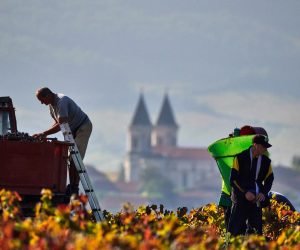
Because of the coronavirus crisis and in order to avoid the overproduction of wine and the additional costs of winegrowers and winemakers the EU, for example, has proposed to create monetary compensation for the destruction of ovaries of grapes. Americans are also discussing options to leave the crop unharvested. Could you express your attitude to such steps? Do French winemakers need such solutions? Should we expect the overproduction of wine and in what price category the most?
As we said above, the weather this year will probably induce lower yields, we don’t foresee an overproduction in any of the Beaujolais categories for the 2021 vintage and we haven’t reached our full potential of production since 2018.
Let`s talk about Сru de Beaujolais. This category is given exclusively to red wines, which are aged after fermentation for at least six months in oak barrels. It means that it is a completely different wine from the young “Beaujolais” which is familiar to many. Could you name the most outstanding producers of Cru de Beaujolais? How stringent are the laws that regulate the production of this category? Have there been cases when one of the winemakers was ready to abandon the category or leave the association – in order to get free from production regulations – as it is often the case today in other countries and other regions?
There is no ageing in oak requirement in the appellations cahiers des charges. There are many talented winemakers, and I could not pick among them who’s more outstanding. Different wines also speak to different palates…
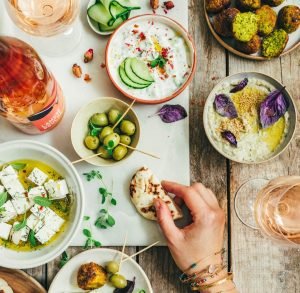
It is true, however, that a group of winemakers put Crus Beaujolais back on the map as quality wines region, in the footsteps of Jules Chauvet, at a time when Beaujolais Nouveau was getting most of the attention.
Production regulations for Crus Beaujolais are indeed stricter than for the regional appellations, especially for maximum yields and minimum maturity degrees authorized. These specifications are very important and are the basis of the quality system of the French AOCs.
We have relatively few producers leaving the AOC, Beaujolais has a well-known identity and that is always a great asset on the marketplace. There is little incentive for a producer to leave the AOC system which was created historically. Also, Beaujolais champions the sense of community, we like to think that producers share this sense of belonging.

As far as we know, the neighbourhood with Burgundy is so close that some crus are allowed to produce wines having the status of AOC Bourgogne. How often does this happen and what is the attitude of your association to such a practice? Does it affect the brand image of Beaujolais? Is there any confusion in the relationship with the consumer because of this?
It does happen occasionally although the “repli” as we call it happens within a very strict legal framework. I’m not aware of any impact on our brand image and obviously, it is up to each wine producer to decide his/her own commercial strategy and what wines he/she wants to make.
Crus Beaujolais represent a surface of 5 635 hectares and 36,2 million bottles, compared to the 25 000 hectares and over 180 million bottles of AOC Bourgogne. Marketing-wise, this differentiation can be a great competitive advantage.
These days the style which is typical of Beaujolais – light and fruit wines that have passed carbonic maceration, is gaining popularity. And carbonic maceration technology is being used increasingly in California and Australia. Comment on this trend, please. Are you planning to use, one way or another, the status of the leader of this trend in your marketing strategy?
To be more precise, the traditional method is locally called “vinification beaujolaise” which is a semi-carbonic maceration technique, in other words, the vats are not sealed, and carbon dioxide is not added as it would be for full carbonic maceration. The CO2 is actually produced by the bunches at the bottom of the vats as they’re slowly crushed by the weight of the bunches on top of them.
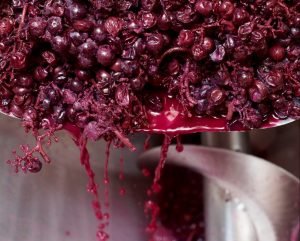
“To be more precise, the traditional method is locally called “vinification beaujolaise” which is a semi-carbonic maceration technique, in other words, the vats are not sealed, and carbon dioxide is not added as it would be for full carbonic maceration.”
A common misconception about Beaujolais wines is that they are all produced on this same way, this is hardly the case! Alternative methods are increasingly being used, winemakers can choose to destem integrally or partially, to limit or extend maceration time, to use this or that extraction technique. Since winemakers all have their own methods, it would not make sense for us to claim carbonic maceration techniques as our very own turf. Also, this is such a natural phenomenon, with minimal intervention, that we can imagine it was the way the first wines were accidentally made.
That being said, we’re not surprised by the semi-carbonic maceration technique gaining momentum, it is indeed a great way to obtain fruit-driven wines with low tannins, a kind of wine that is currently very sought after by consumers.
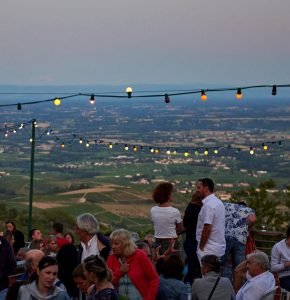
And now about Beaujolais Nouveau. Modern French philosopher Roland Barth in his book “Mythologies” wrote that “wine for the French is a national treasure, just like 360 varieties of cheese and the country’s culture.” We can paraphrase it slightly and say that Beaujolais Nouveau is also the property of France. On the one hand, this is the wine that will not be in storage for long, and on the other, it is on everyone’s lips. It can be called a cult. How do the French themselves feel about Beaujolais Nouveau? What kind of a drink is it for them and what is a holiday that is associated with it? How has the dynamics of global demand been changing over the past three years? What will happen this year with the traditional holiday of young wine? Our editorial staff, by the way, seven years ago came to Beaujolais for a holiday and was the only group from Ukraine. Are there any statistics on the dynamics of attendance – the total number of tourists, the number of countries, the amount of wine drunk per night?
Overall, we observe that the sales of Beaujolais Nouveau and Beaujolais Villages Nouveau have been stabilizing after decreasing for a few years. It is still an important date in the calendar and might be even more important in the post-Covid era as it provides an occasion for people to get together, share a meal and party. The new generation of consumers is particularly loyal: we did a study in 2018 that showed us that more than half of the 25-45 years old drink Beaujolais Nouveaux every year.
Nouveaux are always released the 3rd Thursday of November and it is not related to a bank holiday, it very much has its own significance, even in countries other than France. Season markers have always been celebrated; Beaujolais Nouveaux have become one of them.
When it comes to demand, exports of Nouveaux have globally decreased in the past decade and are now stabilizing in some markets (USA, Russia, Italy, Belgium, Germany). Half of the Nouveaux volumes are exported, to over 100 countries. Japan is the largest importer of them all.
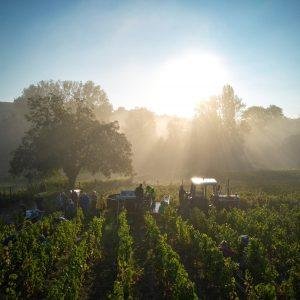
How constant is the climate in Beaujolais and how much does its change affect the industry – how exactly? It is known that the variety Gamay, which occupies 98% of the vineyards, is very sensitive to spring frosts and to temperature differences in general. How do you tackle these problems? How actively is the list of acceptable grape varieties expanded? What happens to the level of alcohol in the wines of your region due to climate change?
Beaujolais has a temperate climate with usually a good balance of sunshine, rainfall and a diurnal temperature range that’s perfect for the ripening of Gamay or Chardonnay. Gamay is indeed an early-ripening grape, so spring frosts are dreaded but our growers adapt their practices depending on each year’s weather, helped by our local Chambre d’Agriculture. Our vine and wine research center, Sicarex Beaujolais, is also working on solutions to attenuate the effect of climate change and is leading experimentations with plantings of other grape varietals but that is still at the experimentation stage. In any case we will have to adapt to increased temperature, earlier ripening, more frequent droughts, and systemic hydric stress as well as more frequent climatic incidents such as hailstorms.
But this is the case for most vineyards. Among many solutions to find, adapting vine training systems and selecting the right clones of Gamay and of rootstocks will be crucial.
What exhibitions and in which countries do Beaujolais’ winemakers regularly visit? What is your attitude to the changes in the policy of Vinexpo and its transfer to Paris? Due to the pandemic, Wine Paris & Vinexpo Paris organized this year Vinexposium Connect, a digital platform with an extensive program for the wine industry. Did you take part in this? What other exhibitions in the world are you planning to take part in?
We didn’t take part in Vinexposium Connect but we will be at Wine Paris next year as well as ProWein.
Inter Beaujolais also organizes tastings in our main export countries (USA, UK, Japan, Canada, China, Sweden soon) and producers usually attend. As of now, we don’t expect to attend another tradeshow.
“One of its fundamentals is upholding the spirit of sharing, particularly through “Beaujonomie”, a concept embedded in Beaujolais’ DNA, that translates into sharing Beaujolais wines, revisited classic dishes and conversations with friends, family, or new acquaintances.”
Today, wine distribution channels are changing and so are channels of promotion. What is your association planning to do in this regard (perhaps assistance to partner restaurants, online tastings, etc.)? How has the marketing strategy changed?
Our marketing strategy has adapted to the new circumstances rather than changed. One of its fundamentals is upholding the spirit of sharing, particularly through “Beaujonomie”, a concept embedded in Beaujolais’ DNA, that translates into sharing Beaujolais wines, revisited classic dishes and conversations with friends, family, or new acquaintances.
In France, we organize the Bienvenue en Beaujonomie festival during the first weekend of July, it is our way to support both restaurants and producers participating by promoting them to the general public. We also animate an international network of Bistrots Beaujolais and give them visibility on a dedicated website as well as promotional material on demand.
On export markets, besides partnerships with local restaurants and wine bars, there have been efforts to develop partnerships with online retailers and provide them with educational material as sales support.
Thank you for the wonderful interview and we hope that it will not be the last.
Photo: www.facebook.com/vinsdubeaujolais/?ref=page_internal